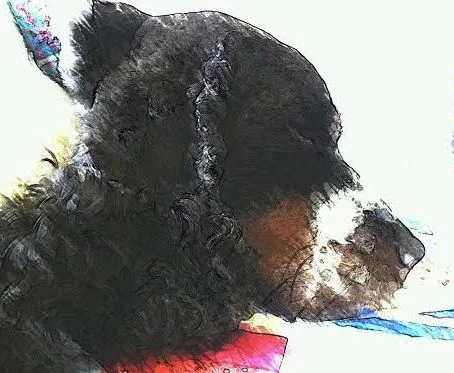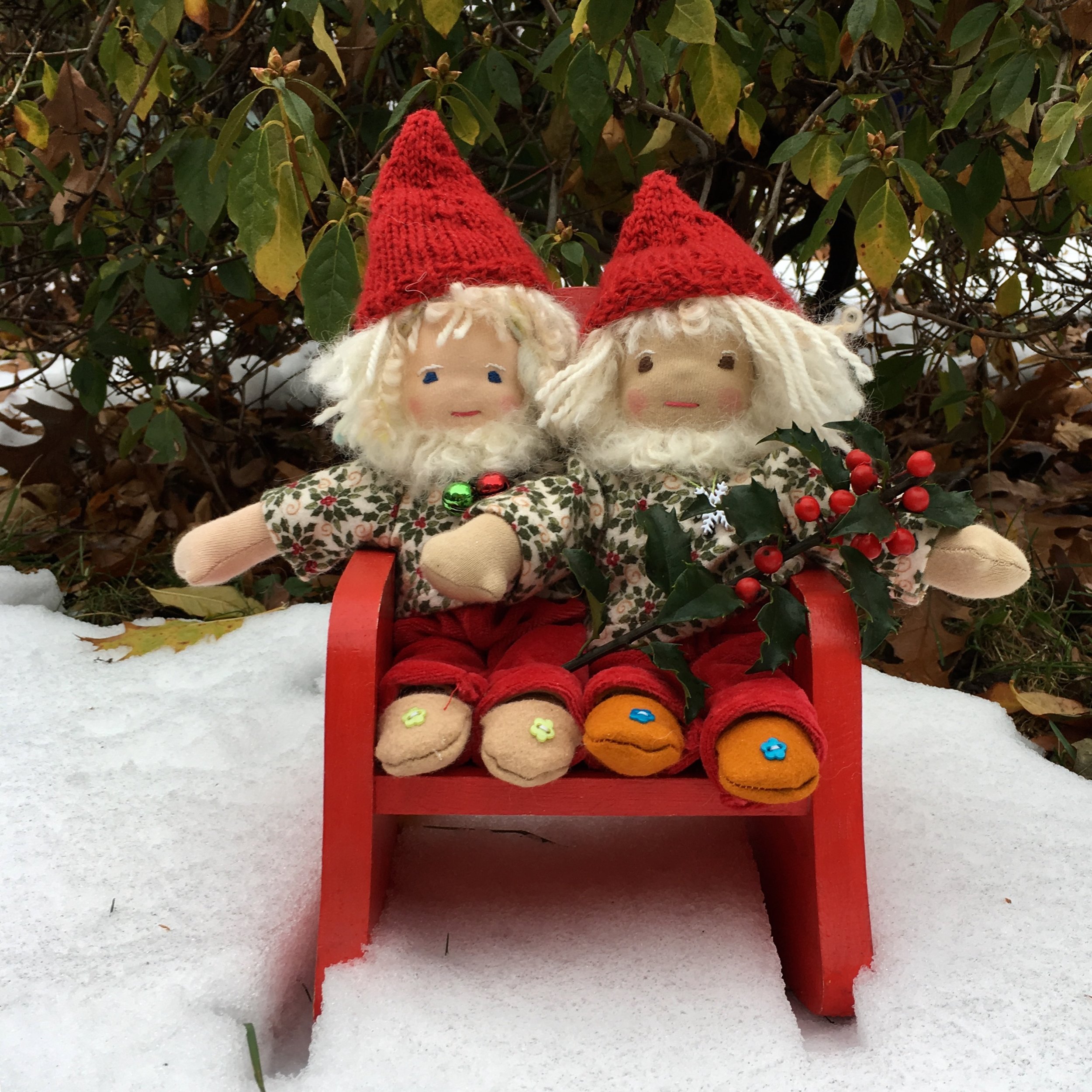Cloudberry GreenKnees and Dewberry Soggybottom, 9 inch Waldorf type dolls
A friend I know desperately wanted a Waldorf type gnome this Christmas. I decided that making two gnomes was just as easy as one…and then I could have one too!
Dewberry Soggybottom (on the right above) is a shy, but very sweet once he gets to know you. He is the first one up each morning. He heads right out to forage in the woods. He sees dew on the berries and mushrooms. On his way home to breakfast, he often stops in the meadow to look at the flowers. That can be a problem….he keeps forgetting there is a lot of dew on the grass at that time of day. So when he sits down to look carefully at a flower his pants get damp! Which explains his name! He’s gone off to his forever family and I hear he is very happy in his new home.
Cloudberry GreenKnees (on the left above) lives at my house. He spends his days looking up at the sky, both day and night. As a result, he trips a lot in the meadow and frequently comes home with grass stains on his knees!
These dolls are based on the pattern in for the small Waldorf doll in Maricristin Sealey’s book, Making Waldorf Dolls. I scanned the pattern and made it a bit smaller than her pattern. I always shorten the length of the arms in her patterns—I just like them better a bit shorter.
I knit their hats using a sport weight yarn. Here’s my pattern for a smaller gnome hat. For these dolls who have a 7 1/2 inch finished head, I cast on 32 stitches. Knit 2 to 4 rows of ribbing, knit 10 rows, then begin to decrease at the end of each needle per the pattern in the linked post. For these hats, I decreased every 3rd row. (If you have worsted weight yarn, cast on 28 stitches).
I loved making these gnomes! And I love having one of my very own too!
Safety Note: These gnomes have necklaces and buttons on their shoes. If you are making dolls for children under age 5, please don’t use bottoms or any necklaces.
Cloudberry in his new gingham shirt. Because it isn’t Christmas ALL year! (And his pants are freshly laundered….so, no green knees)!
Notice: This blog is not monetized: I do not use affiliate links. When there are links in a post, they are to give credit to another creative person, because I like or have used a product, or to help the reader easily find supplies for a project.


